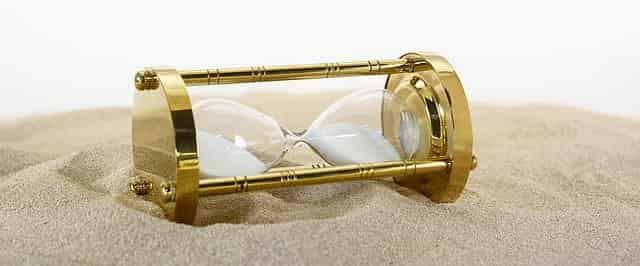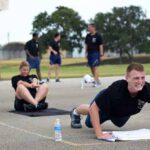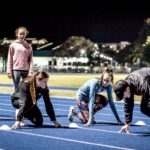Periodisation in sports
Periodisation in sports is the division of the training year into periods so as systematically prepare and develop sports form and skills as well as moral and will qualities for the training tasks, training means and methods must be planned and solved systematically so that the sportsperson is ready and capable of achieving the personal best performance at a fixed time is called periodisation in sports.
The training year or the time available for training can be divided into the following periods and phases:-
| S.NO. | PHASES | DURATION |
| 1. | PREPARATORY PHASE Preparatory period I Preparatory period II Preparatory period III | 6 weeks to 7 months |
| 2. | COMPETITION PHASE Pre-competition period Main competition period Post competition period | 2 weeks to 1 month |
| 3. | TRANSITION PERIOD
| 1 week to 6 week |
TYPES OF PERIODISATION IN SPORTS-:
There are basically three types of periodization
- SINGLE PERIODISATION
- DOUBLE PERIODISATION
- TRIPLE PERIODISATION
The word single, double and triple periodization refers to the number of peak forms during the annual plan.
SINGLE PERIODISATION IN SPORTS:-
In single periodisation the sportsperson attains peak form once so as to put up the best performance in a most important competition of the year.
SINGLE PERIODISATION IN SPORTS
| MACRO CYCLE | |||||||||||
| PREPARATORY PHASE | COMPETITION PHASE | TRANSITION PHASE | |||||||||
| PP I | PP II | PP III | COM. I | COM. 2 | |||||||
| NOV | DEC | JAN | FEB | MAR | APR | MAY | JUN | JUL | AUG | SEPT | OCT |
DOUBLE AND TRIPLE PERIODISATION IN SPORTS:-
In double and triple periodisation, sportsman comes to top form twice or thrice respectively for two or three important competitions, separated by long intervals.
DOUBLE PERIODISATION
| MACRO CYCLE I | MACRO CYCLE II | ||||||||||||||
| Preparatory PD. | Competition PD. | Preparatory PD. | Competition PD. | TRANSITION PHASE | |||||||||||
| PP I | PP II &PP III | C I | C 2 | PP I | PP II & PP III | C I | C 2 | ||||||||
| NOV | DEC | JAN | FEB | MAR | APR | MAY | JUN | JUL | AUG | SEP | OCT | ||||
AIMS AND CONTENT PERIODISATION IN SPORTS
PREPARATORY PERIOD: –
The aim of this period is to concentrate on the development of different factors on which sports performance depends. This phase covered 2/3 of the total training time and this is the largest period of training. This period is dominated by a high volume of stimulus but the intensity is medium. It’s divided into two or three-phase depending upon the total time available for training; each phase has its own tasks and goals to be achieved.
Read more about:- what are the speed in sports training and types of speed?
The three phases of the preparatory period are as follows:-
- To re-achieve previous training state.
- To make the sports person capable of undertaking higher training loads
- To base creation for the specific performance factors
PREPARATORY PHASE I:-
In this phase, training is dominated by an increase in the volume of stimulus, and the training intensity is slightly increased. There is the dominance of general exercises and competition is few in number. This phase lays stress on the development of general ENDURANCE, STRENGTH, co-coordinative, and FLEXIBILITY with regard to Technique training, stress is only on learning of new skills up to the attainment of fine coordination rather than automatization. Relearning of SKILL, if needed is also emphasized during this phase. There is little emphasis on TACTICAL TRAINING, stress on the acquisition of tactical knowledge through the theoretical session.
PREPARATORY PHASE II: –
This phase lays stress on the development of those factors on which sports performance depends directly. This phase is dominated by a high volume of load and intensity is also increase considerably. There’s a dominance of specific exercise. However, generated exercise still continues. The number of the competition is still small. The motor components develop in the first phase maintain and the emphasis is laid on the development of specific motor abilities. In technical training is slightly increased. Theoretical session of tactical training still plays important role in the preparatory phase 2.
PREPARATORY PHASE III: –
The main task of this phase is to prepare the sportsperson for the competition. Special and competitive exercises dominate and the emphasis is an integration of important performance factors. In this phase, the volume of stimulus is optimally increased, and they’re also a short increase in the intensity of load.
The specific and competitive exercises, Skill and Technique, and tactical part dominate, and general exercises are considerably reduced. The number of the competition is increased.
COMPETITION PHASE:-
The main aim of the competition period is to attain top sports performance and to maintain it for a sufficiently long period. This period is dominated by a load of high intensity whereas the volume of stimulus is low. Specific and competitive exercises dominate and the emphasis is laid or proper integration of various factors of performance acquiring complete mastery of the skill is emphasize which is tested during a competitive situation. In order to implement skill, Technique, tactics, intelligence, and creativity during competition. The training of a sportsperson during the competition phase is well organized while keeping in mind the following factors:-
- The better performance level of sportsperson
- Duration of the competition period
- Number of competition and their schedule
- Frequency of competition
- Load tolerance ability of the player
- Individual differences or characteristics.
TRANSITION PHASE: –
After having undergone hard and stressful training during the earlier two periods i.e. preparatory and competition phase, but this phase aims are to provide recovery and relaxation to the sportsperson. Therefore, this phase prepares the sportsperson to start the next annual cycle of training after proper recuperation. The duration of this phase should not be more than six weeks. If the Transition phase longer than six weeks which results in loss of form which will have to be compensated by putting more effort into the following preparatory phase.
In the transition phase of training, both the intensity and volume of stimulus are kept low. During this phase, the training is well organized that the training state of the person is maintained as much as possible but the training means and method adopted are such that the sportsperson recovers from the hard effort put in during the competition period.
Read more about-: How overload affect the performance level of a sportsman and what is the measures to overcome this overload in sports training just click the link below ⇓⇓⇓
https://www.sportzyogi.com/overload-in-sports-training/





